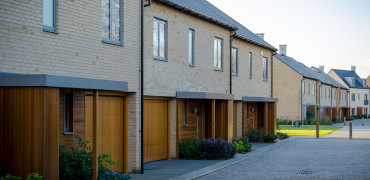As I write, the political party conference season is in full swing; a time famed for promising proposals and heated debates. As party leaders took to their stands, the housing industry sat with bated breath and waited to hear what strategy would be taken in tackling the housing crisis and alleviating fuel poverty. Then, at the end of the Conservative Party Conference 2017 PM Theresa May took to the stand with BIG news… an impressive £2bn of additional funding to help deliver the affordable housing so sorely needed in this country today.
With so much left unsaid, but a bigger governmental focus on our industry from now on, HA Magazine takes a look at what the affordable housing sector needs from its government:
Supply and demand
Studies suggest that three million new homes are needed by 2030 and Prime Minister Theresa May has targeted building a million homes by 2020 alone. Needless to say, the issue of housing (or lacktherof) is very much top of the agenda.
If anything can be taken from the party conference season thus far, it is that cross-party consensus on the housing crisis seems to be that the housing crisis is an issue of demand. However, one could equally argue it is an issue of supply also.
Between 2010 and 2016, the Government cut the communities and local government budget by 51%, making it more difficult for councils to properly fund departments in charge of housing and planning. These funding cuts have also stimulated a shift to large developments outside the existing infrastructure and onto the green belt. In addition, policies such as ‘help to buy’ and ‘right to buy’ have contributed to further stoke housing demand without adequately tackling supply.
Whilst featuring heavily in political discussion, leaving the EU will not in itself reduce demand for housing. The Government needs to enact more ambitious housing and planning policies that allow house builders to supply new homes more rapidly.
Improving existing stock
The UK is legally committed to reducing its carbon emissions by 80% by 2050 and given that 85% of our existing homes will still be standing in 35 years’ time, the Government must do more to address inefficient buildings.
Refurbishing our existing homes is a far more cost effective way of tackling carbon reduction compared with trying to push for ‘zero carbon’. As a nation, we have some of the oldest and least energy efficient housing stock in Europe. The housing industry alone cannot fix this, they need support from a government that listens.
Tackling fuel poverty
There are around 4.5 million fuel poor homes in the UK today. There are also a further 21 million UK households suffering with poor energy efficiency - below B and C on an Energy Performance Certificate.
A 2016 study by University College London (UCL) estimated that 9,000 people died last winter in England and Wales as a result of living in a cold home; the highest number for 15 years.
Replacing outdated heating systems with renewable alternatives can reduce our carbon footprint whilst also keeping homes warm. Heat pumps, for example, extract renewable energy from outdoor air. This offers a reduction in run costs; studies suggest by up to as much as 10% of the UK national average. Also, in addition to helping the tenant reduce their heating bills, the renewable heat from the heat pump can qualify for quarterly RHI payments for the landlord, which either offsets the cost of the heat pump or provides funds for further upgrades to property and heating.
In summary
Building new homes and helping those in fuel poverty financially to cover their bills is undoubtedly part of the solution, but alone these things will not tackle the overall problem of inefficiency long-term. Housing professionals need to see real commitment from their government to help retrofit old buildings and tackle the issue of fuel poverty with more sustainable and long term solutions, such as encouraging housebuilders and landlords to implement energy saving and efficient heating products into their housing stock.
Joe Bradbury is Assistant Editor of Housing Association Magazine.



